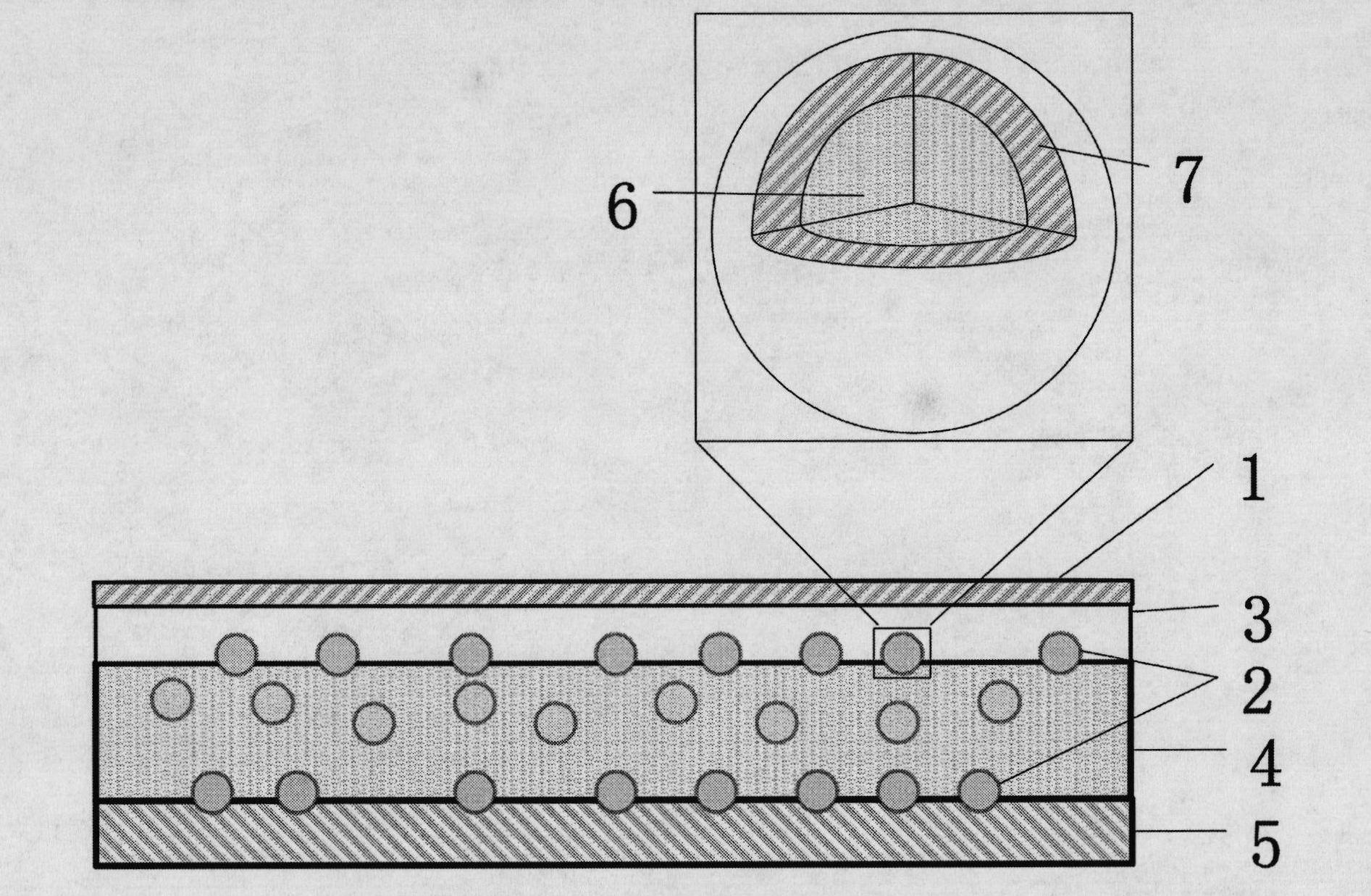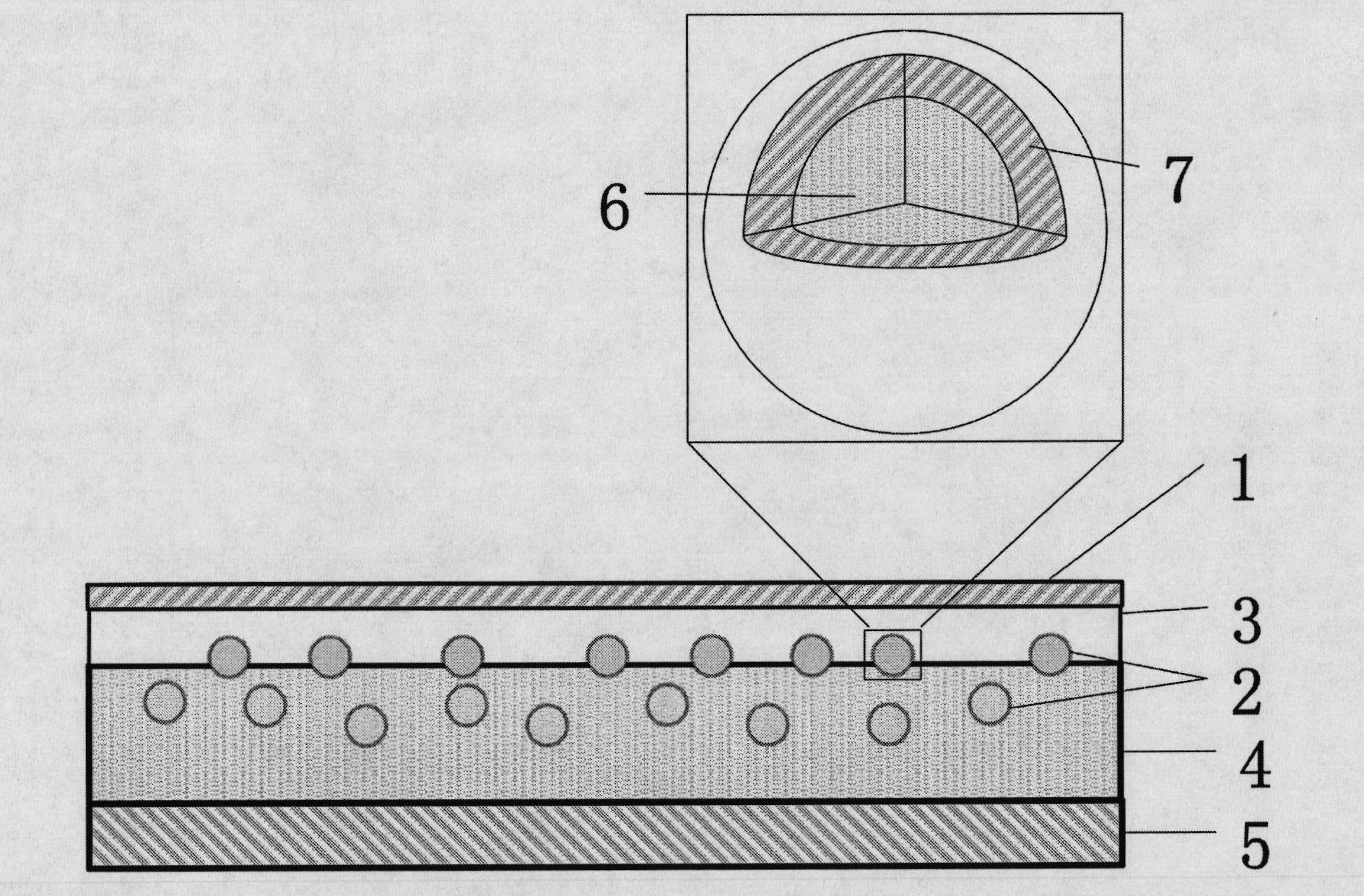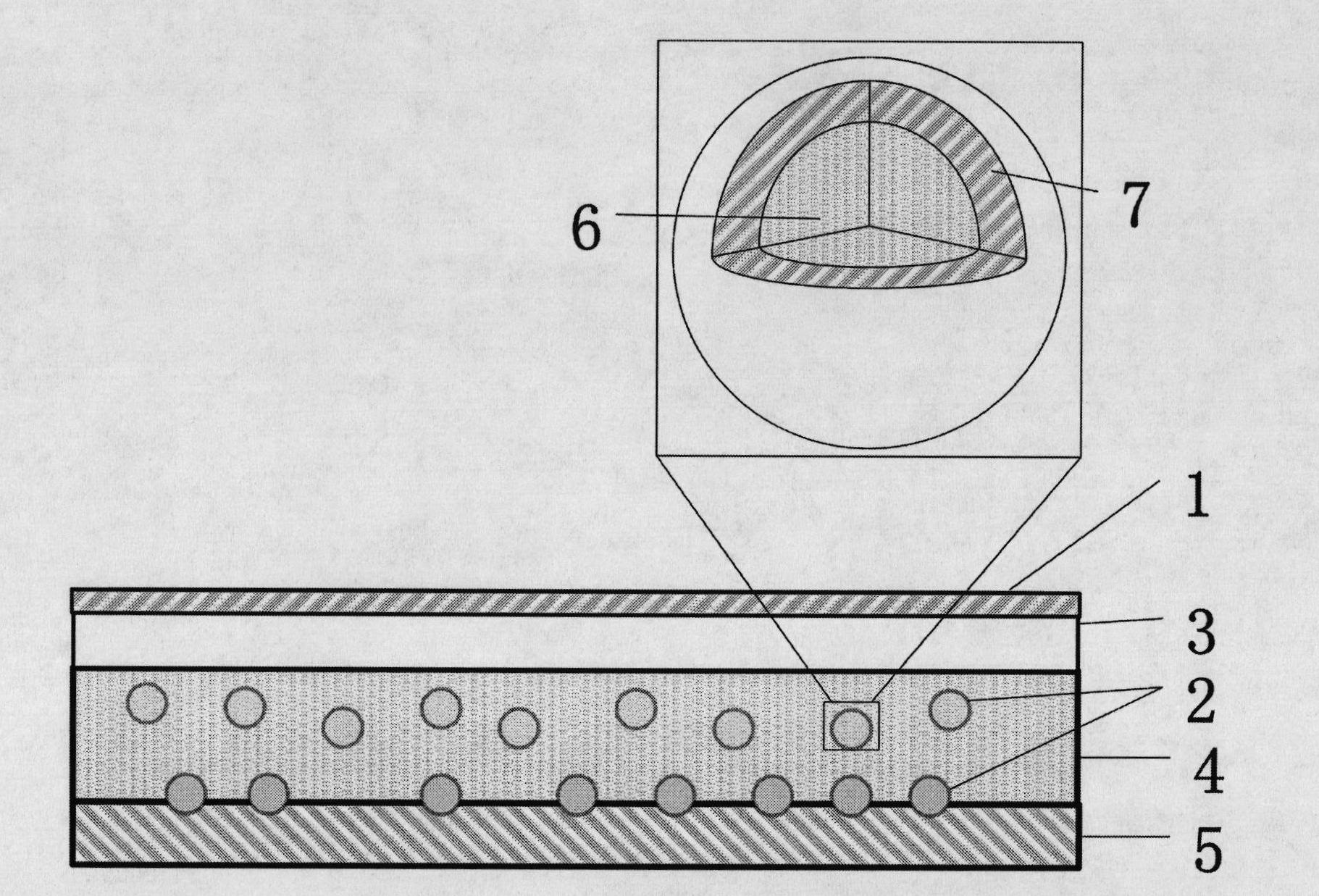An Organic Solar Cell Using Core-Shell Nanoparticles to Improve Conversion Efficiency
An organic solar cell and nanoparticle technology, applied in the field of solar cells, can solve the problems of low light absorption efficiency and low photoelectric conversion efficiency, and achieve the effects of improving photoelectric conversion efficiency, improving light absorption efficiency, and enhancing scattering.
- Summary
- Abstract
- Description
- Claims
- Application Information
AI Technical Summary
Problems solved by technology
Method used
Image
Examples
Embodiment Construction
[0033] The present invention will be further described in detail below in conjunction with the drawings and specific embodiments:
[0034] The following examples are used to illustrate the present invention, but not to limit the scope of the present invention.
[0035] figure 1 A schematic cross-sectional view of an organic solar cell according to an embodiment of the invention is shown. in figure 1 Among them, the organic solar cell element mainly includes a first electrode 1, a modified layer 3 and a photosensitive active layer 4 under the first electrode 1, and a second electrode 5. The aforementioned photosensitive active layer 4 is a single layer structure composed of an organic donor material and an organic acceptor material, wherein the organic donor material and the organic acceptor material can be mixed or layered with each other The photosensitive active layer 4 is formed in a way. The aforementioned organic donor material can be, for example, poly(3-hexylthiophene) (...
PUM
| Property | Measurement | Unit |
|---|---|---|
| Shell thickness | aaaaa | aaaaa |
| Thickness | aaaaa | aaaaa |
Abstract
Description
Claims
Application Information
 Login to View More
Login to View More - R&D
- Intellectual Property
- Life Sciences
- Materials
- Tech Scout
- Unparalleled Data Quality
- Higher Quality Content
- 60% Fewer Hallucinations
Browse by: Latest US Patents, China's latest patents, Technical Efficacy Thesaurus, Application Domain, Technology Topic, Popular Technical Reports.
© 2025 PatSnap. All rights reserved.Legal|Privacy policy|Modern Slavery Act Transparency Statement|Sitemap|About US| Contact US: help@patsnap.com



